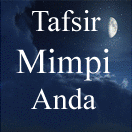A general name for a group of related framework
silicate minerals that form the most abundant constituent in
igneous rocks and form about 60 percent of the Earth’s crust.
They are common in most types of igneous rocks, except for
the ultramafic suite, and form major constituents of schists,
gneisses, migmatites, pegmatites, and in arenaceous sediments.
Most feldspars are white or clear to translucent, and
have a hardness of 6 on the Mohs hardness scale.
Most feldspars are members of a Ternary system with
three compositional end members. The compositions
NaAlSi3O8, KAlSi3O8, and CaAl2Si2O8 are referred to as sodium,
potassium, and calcium feldspar. There is a continuous
compositional range between the potassium and sodium
feldspars, with the intermediate varieties known as alkali
feldspars, including sanidine, anorthoclase, and albite. Likewise,
the continuous compositional series of feldspars between
sodium and calcium feldspar are known as the plagioclase
feldspars, with compositional variants including albite, oligoclase,
andesine, labradorite, bytownite, and anorthite. Celsian
feldspar has the composition BaAl2Si2O8.
Feldspars exhibit a variety of crystal forms and structural
states. Calcium feldspar (anorthite) and sodium feldspar
are triclinic, whereas potassium feldspar is monoclinic. Several
of the feldspars crystallize in different structural states and
may have different lattice obliquities depending on the temperature
of crystallization.
See also MINERALOGY.

















Tidak ada komentar:
Posting Komentar
Catatan: Hanya anggota dari blog ini yang dapat mengirim komentar.